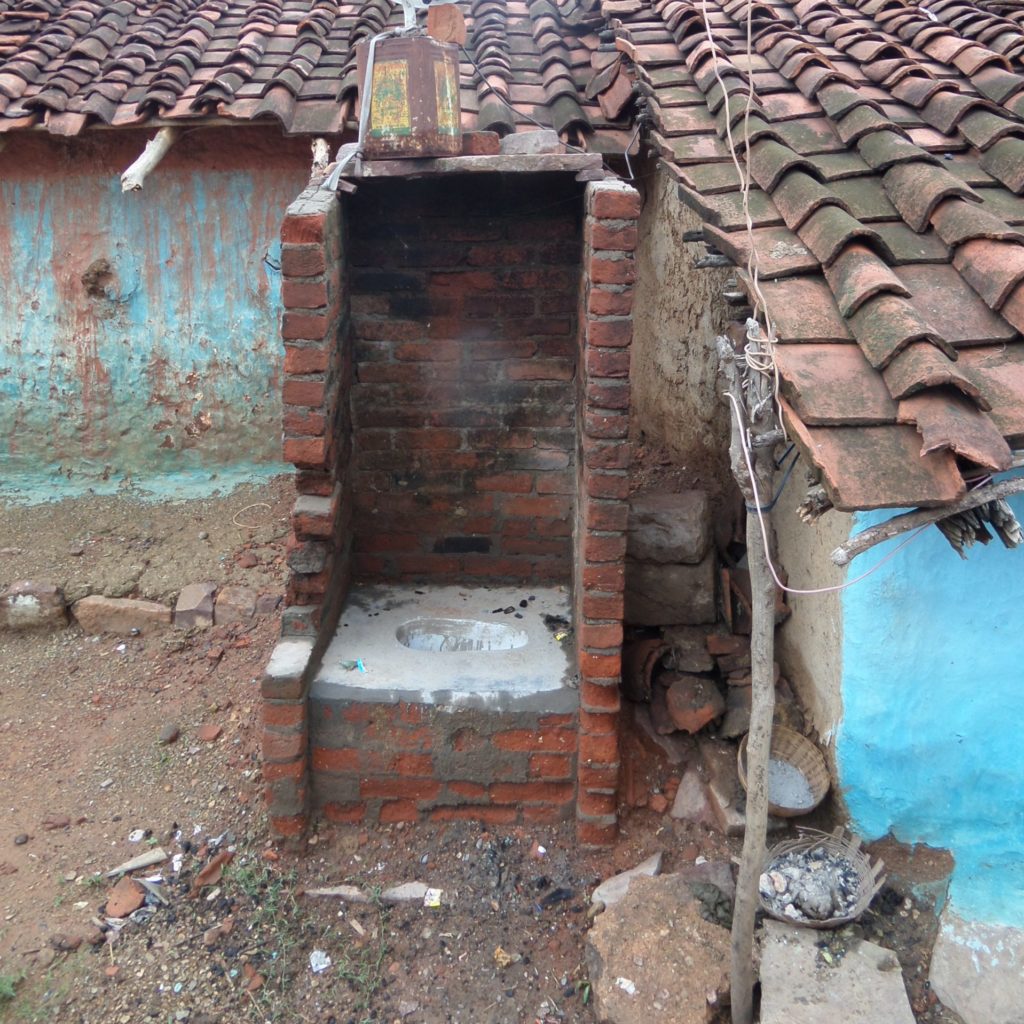Prime Minister Modi has set the 2nd October 2019 as the target date for rural India to be Open Defecation Free (ODF). Remarkable progress has been achieved, but there is a very long way still to go. One major problem is partial usage of toilets. Jamie Myers and I reviewed studies and surveys and their methodologies and concluded that in rural North India at least half the toilets that are functioning are not used by all members of the household all the time. (See Frontiers 7 on Norms, Knowledge and Usage) This can vary by time of day, season, gender (with OD generally more by men than women), age, and number in the household. Often the toilet is used sparingly to delay it filling and to postpone all the costs and pollution entailed in getting it emptied.
The solution widely favoured by rural people is to construct a septic tank, a large sealed underground chamber, and the larger the better. On recent field visits in Madhya Pradesh and Chhattisgarh, Jamie and I found many examples of this, with costs ranging from Rs 20,000 to Rs 70,000. This puts them out of reach of many poorer people. It also makes them a status aspiration, delays construction, and deflects attention from cheaper, better, more sustainable solutions, more amenable to self-help. And masons favour and recommend septic tanks, the bigger the better, because they cost more and they make more out of construction.
The Government recommendation is the much smaller and cheaper twin pit. This has two honeycombed leach pits with the toilet above in the middle and a Y junction so that one pit can be filled at a time. The practice is to fill one, which with an average family may take roughly 5 to 8 years, cover it over when nearly full, and leave it to stand while the second pit is used. After about a year, the contents of the first pit have turned into harmless and valuable fertiliser. A family’s shit turns from being a liability in a septic tank to a growing asset. Each visit to the loo is an investment, and the more it is used the quicker will be the return. The pit can be emptied safely and its contents used or sold. But we found people with twin pits paying masons to build septic tanks for them. A mason in a village in Raipur District told us that he had replaced over a hundred twin pits with septic tanks.
In general (Maharashtra is said to be an exception) it seems people do not know about or do not believe in the advantages of twin pits over septic tanks. I may be wrong, but Information about twin pits does not seem to have been a major part of IEC (Information, Education, Communication) campaigns. People see twin pits as too small and so too quick to fill. They then use them sparingly to delay filling up. We were struck by the almost universal ignorance of village people on these points. And we were told by women’s self-help groups that a twin pit together with superstructure could be built for as little as Rs5,-6,000!, with a septic tank from four to ten times more expensive.
There was a major breakthrough last week. Led by Parameshwaran Iyer, the Secretary in charge of the national programme, the Swachh Bharat Mission- Gramin, Principal Secretaries from almost all the States set a splendid example by themselves getting down into pits, digging out fertiliser, and being photographed handling it. They overcame the belief that it was polluting, finding the contents of the pits to be dry, crumbly, and totally lacking in smell, a fertiliser which some compared to coffee powder. They returned to their States armed with the authority of personal experience, and a small jar of the fertiliser to prove the point.
The next day we joined the CEO of Raipur District in Chhattisgarh, Nileshkumar Kshirsagar, and some of his staff in digging out the fertiliser from more pits. One pit we took it from had been abandoned because there were so many users in the family that they feared it would fill up too fast. The owner had built a septic tank instead, he told us for Rs70,000. When we gave him Rs 300 for the fertiliser we had dug out from his old pit (I hope it was a fair price) and were taking with us, he seemed bemused, perhaps because he had made a huge investment in a liability that would eventually have to be emptied, when for a fraction of the cost his large family could have been saving for the future every time they went to the loo.
Can understanding about twin pits and fertiliser solve the problem of partial usage? Not at once. But if the Principal Secretaries inspire their staff to empty pits, and if this filters down the hierarchy to field workers, perhaps this could become transformative, and support changing norms and practices. The transformative shift is from the lose-lose-lose of a septic tank – costly to build, nasty and expensive to empty, and encouraging partial usage and OD to delay its filling up – to the win-win-wins of twin pits – cheaper to build, harmless and easy for owners themselves to dig out, costless to empty except for labour, cleaner and not polluting, and with a valuable product, giving an incentive for use by all the family all the time with every deposit an investment in future fertiliser. And better health and less of the damaging effects of stunting on children’s, on a whole generation’s, abilities and prospects in life.
Can political and spiritual leaders now take a lead and set an example, themselves entering pits and digging out fertiliser? And then showing others how harmless and odourless the contents are? What a massive opportunity! This could be a big push towards the SBM (G) goal of a sustainably ODF rural India. Will they rise to the challenge and show that the pits bring profit not pollution? This is a major issue. Time is running out. Their urgent action could be decisive. We must watch this space with hope.
Robert Chambers is a Research Associate at IDS and a staff member of the CLTS Knowledge Hub.






